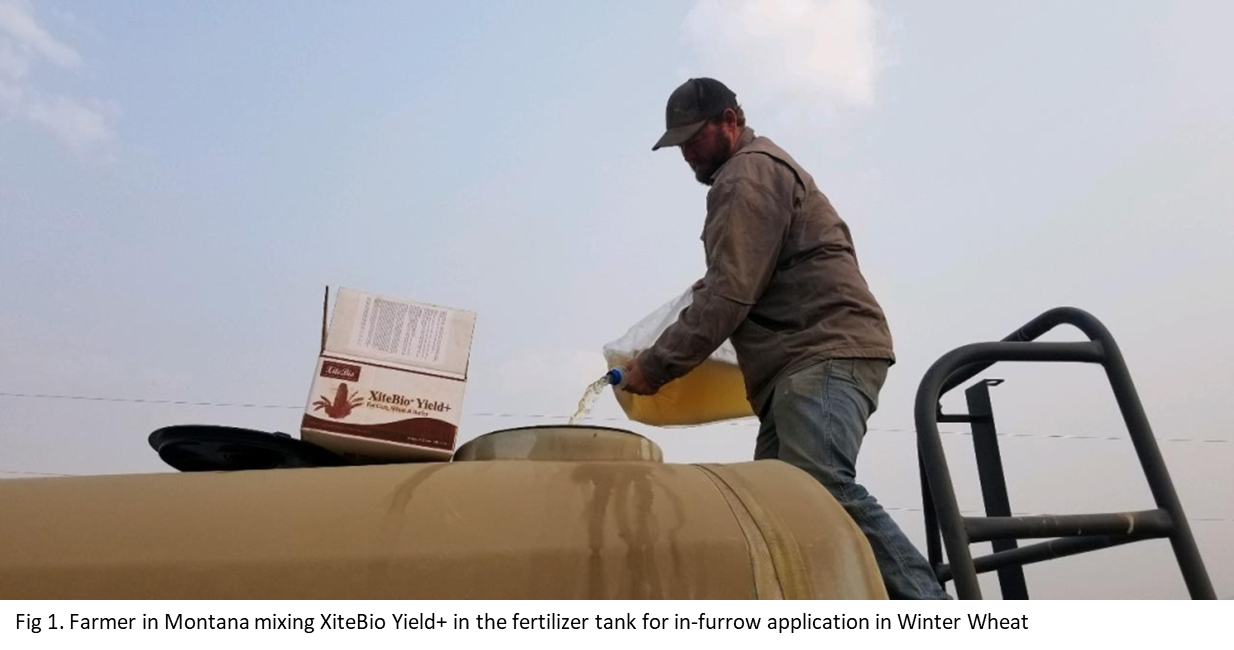Many farmers are familiar with applying inoculants and biologicals on their spring crops. With the increased interest in fall-seeded crops like winter cereals and winter peas many farmers will be looking to use similar products during fall seeding. You don’t need a keen eye to notice crop acres look very different after autumn harvest than they do in the spring, so it stands to reason that application will look different too. In this week’s edition of Growing Possibilities, we will see how applying biologicals on a fall seeded crop differs from spring inoculations.
Application of inoculants and biologicals onto fall seeded crops is similar to spring seeded applications, with some exceptions and extra precautions to consider. Unlike spring seeded crops, you cannot apply anything post-emergent in winter. On-seed or in-furrow applications are your options for inoculating fall crops.
Overnight freezing and frost events are common in many regions, and are always something to be careful of when using bacterial inoculants and biologicals. Bacteria are sensitive to temperature, and low temperatures can reduce their effectiveness and even kill them (1). Making sure your soil will stay above freezing for a short period of time after application can ensure the growth promoting bacteria in your product of choice are in optimal condition when they reach your plants. These lower temperatures are also something to keep in mind when storing seed that has been treated with living microbes. Keeping treated seed out of freezing temperatures is a must, and the manufacturer’s storage instructions should be carefully followed during the entire application process until the seed is in the ground.
With many winter crops, seeding is done into plant stubble from the previous crop (2). This is to trap snow on the field to provide insulation to young plants during the winter months, and should come into consideration when applying your inoculants and biologicals. Excess soil debris or field trash in and around the seed furrow can prevent your applied bacteria from getting to your seed. Keeping your seed furrow clean of excess debris from combining is essential before applying bacterial products.
Whether you’re using a cover crop to protect your field or growing a cash crop over winter, applying inoculants and biologicals to your winter crops may also give you the similar plant health advantages you’ve come to expect for spring crops. Don’t be left out in the cold come harvest!
References:
1) Liu, M., Feng, F., Cai, T., & Tang, S. (2020). Soil Microbial Community Response Differently to the Frequency and Strength of Freeze–Thaw Events in a Larix gmelinii Forest in the Daxing’an Mountains, China. Frontiers in Microbiology, 11(June), 1–12. https://doi.org/10.3389/fmicb.2020.01164
2) https://www.growwinterwheat.ca/growing-winter-wheat/seeding/general-seeding/


